Making Friends with the Search Engine
Search Engine Optimization, or SEO as the cool-kids call it, means tweaking aspects of a website to make it appear higher in organic (aka free) search results. Many companies view the “holy grail” of SEO as landing on the first page of a Google search.
The hype is warranted: as much as 73% of traffic to business sites comes through organic searches, which means SEO tactics should be more than an afterthought in your company’s marketing plan.
As a rule, the more times a website appears in a search and the higher it is ranked, the more often that website will be visited. It’s a feed-forward cycle. So how do you get your website to top the search lists?
It’s all about the algorithms.
SEO techniques work to impress the ever-evolving search engine algorithms that crawl your site and determine rankings. With the help of Search Engine Land’s incredibly helpful SEO Periodic Table, we take a quick look at some “on-page” and “off-page” SEO tactics that ensure the algorithms will like what they see.
3 On-Page SEO Indicators
1. Site Content
Quality. Maintain substantial, well-written content on your site.
Keywords. Research and incorporate the words that people use to search for content on your site, or for businesses in your field.
Engaging. Make sure your material is interesting and easy to digest, encouraging visitors to stay.
Fresh. Don’t let your content get stale. Consistently update your website with new blog posts, pages or even social feeds.
Ad Heavy. Including too many ads, in relation to your content and text, downgrades your website in the eyes of the algorithm.
2. HTML
Titles Title-tags should contain your researched keywords.
Descriptions. Meta-descriptions should accurately describe the page.
Headers. Use relevant keywords in headlines.
Structure. Build your pages with solid frames that organize data and content into sections. Ensure page previews load consistently when shared across social channels.
Stuffing. Do not “stuff” your website with unnatural sounding keyword use. Modern search engine algorithms detect such blatant attention-grabbing tactics.
Hidden. Make sure designs don’t cover/hide relevant keywords.
3. Architecture
Crawl. Be sure search engines can easily index (read and interpret) your site’s content.
Duplicate. Eliminate pages with duplicate content; they deduct points from your overall score.
Speed. Be sure the pages load at a reasonable speed. Test yours here.
URLs. Try to keep URLs short and include relevant keywords.
Mobile. Program your site to easily convert and format for mobile users.
Cloaking. Do not show search engines different information than humans see – visible content should mimic what’s written in the code.
3 Off-Page SEO Indicators
1. Links to and From the Site
Number. Encourage links to your website from social media, emails, blog and other websites.
Text. Embed outgoing links in your text to sites containing the same keywords.
Quality. Ensure links to and from your site are interacting with trust-worthy, respectable websites. Never buy them.
Spam. Do not create links back to your site by spamming websites/blogs.
2. Trust of the Site
Authority. Boost your site’s perceived value with links, shares, and other “trust” factors.
History. Keep your site’s reputation clean and remember a certain amount of trust comes with a domain’s age.
Identity. Have a way to verify site identity and authors.
Piracy. Don’t include copyrighted material. Pirated content will get your site “flagged.”
3. Social Interaction with Your Site
Reputation. Boost your reputation with legitimate shares and links from people not known for spam or other shady online dealings.
Shares. Prepare for the growing importance of social shares in organic rankings and start earning them now. Google+ shares (for obvious reasons) curry special favor with Google search engines.
Clearly there are many best practices to balance when optimizing your site for organic search success. It’s important to note that these on- and off-page indicators must be monitored, altered and refreshed on a regular basis, to maintain an active site and a relevant ranking.
As such, the No. 1 SEO tactic that will consistently boost your online presence is having regularly produced, quality content that your audience wants to read and share. For more on developing a content strategy, check out “A Good Content Strategy Means Looking Within,” and explore why content matters for your web presence in “Think Like A Web Content Strategist.”
